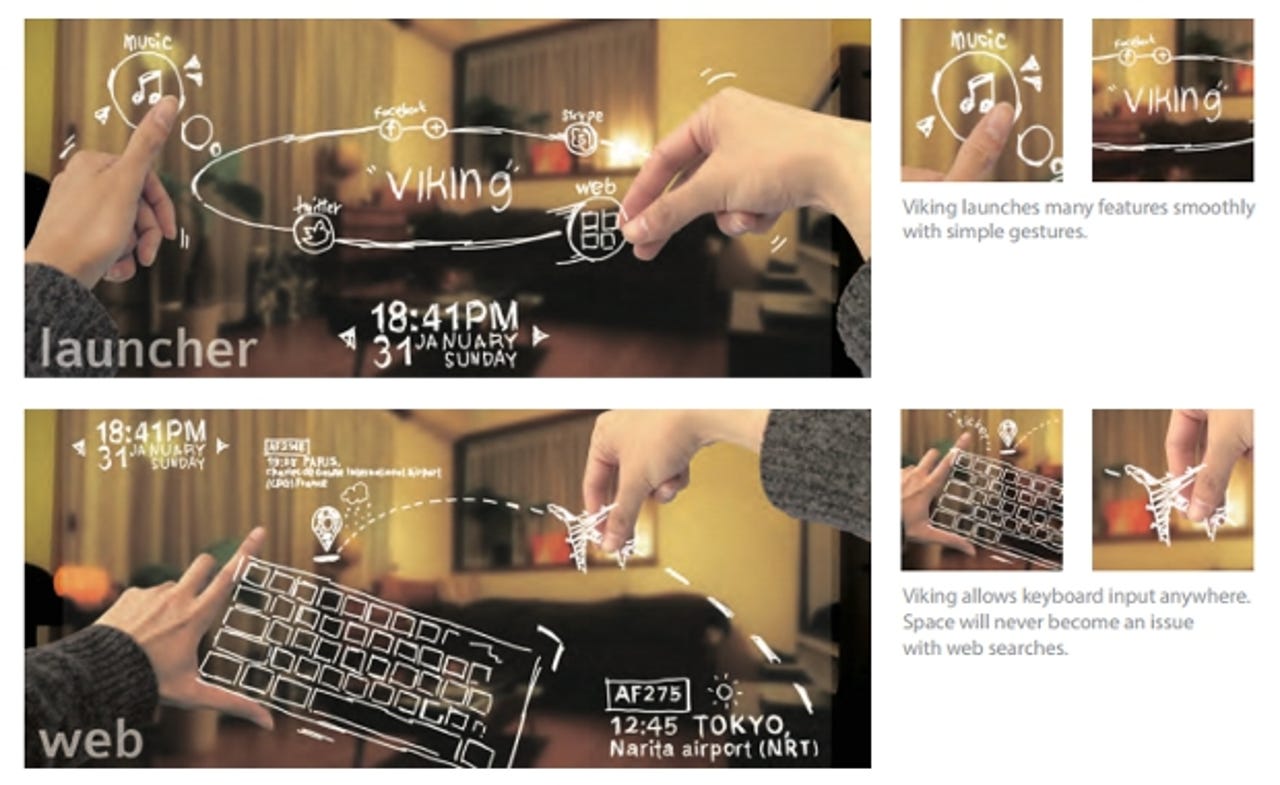Google Glass rival gestures to future of wearable computing


The jury may be out on whether wearable computers are going to catch on, but the buzz around Google Glass' head-mounted display and smart watches like Pebble is undeniable.
A new head-mounted display (HMD) system is available to try out today, with the launch of a development kit for the Viking OS.
The Viking OS is a FreeBSD-based operating system that Japanese software development firm BrilliantService developed for HMDs.
The user interacts with the OS using hand gestures. The head mounted display will place transparent icons and key boards/pads in the user's field of view. The user interacts with the system by making gestures in the air where these icons or key board/pads appear to be.
In practice using an early version of the OS has proved awkward for some users, with CNET Asia reporting it was tricky to dial a number by hovering a finger over a virtual keypad and difficult to draw by tracing a finger on a digital canvas.
However it is early days for the OS, with a final product running the OS not due to be shipped for another three years.
The development kit available today combines a head mounted display with the Viking OS and an SDK, which can be used to write apps in Objective-C. To use the kit the head mounted display must be attached to a laptop that runs the Viking OS.
The head mounted display shipping with the development kit is a Vuzix Star 1200XL augmented reality headset. Users of the headset look through two widescreen video displays, running at WVGA 852 by 480 resolution and with a 35-degree diagonal field of view. The headset also includes a detachable 1080p camera and noise isolating headphones and a head tracker capable of tracking movement to three degrees of freedom.
A separate camera detects how gestures are interacting with the virtual icons in the user's field of view. The camera, a PMD [vision] CamBoard nano, provides the necessary depth perception to track gestures, tracking movement at a frame rate of up to 90 FPS at 160 x 120 px with a 90 degree field of view.
Feedback on early prototypes of headsets running the Viking OS criticised the bulky design, with a CNET Asia reporter describing the prototype as "big and bulky", adding "it sat uncomfortably on my face".